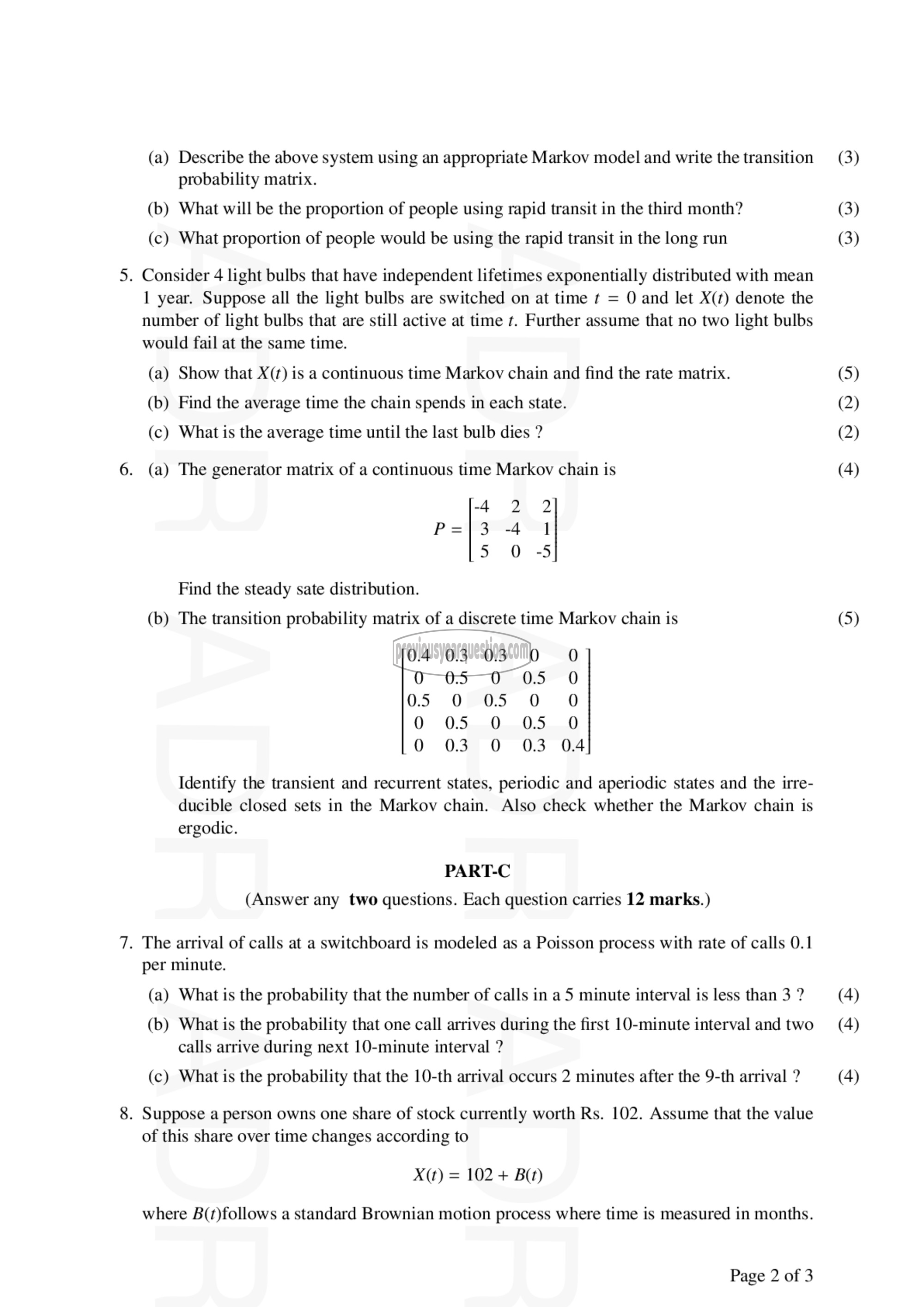APJ ABDUL KALAM TECHNOLOGICAL UNIVERSITY Previous Years Question Paper & Answer
Semester : SEMESTER 1
Subject : Probability and Stochastic Processes
Year : 2021
Term : APRIL
Branch : FINANCIAL ENGINEERING
Scheme : 2015 Full Time
Course Code : 01 MA 6017
Page:2
(a) Describe the above system using an appropriate Markov model and write the transition
probability matrix.
(b) What will be the proportion of people using rapid transit in the third month?
(c) What proportion of people would be using the rapid transit in the long run
5. Consider 4 light bulbs that have independent lifetimes exponentially distributed with mean
1 year. Suppose all the light bulbs are switched on at time / = 0 and let X(t) denote the
number of light bulbs that are still active at time 7. Further assume that no two light bulbs
would fail at the same time.
(a) Show that X(t) is a continuous time Markov chain and find the rate matrix.
(b) Find the average time the chain spends in each state.
(c) What is the average time until the last bulb dies ?
6. (a) The generator matrix of a continuous time Markov chain is
4 2 2
P=|3 -4 1
5 0 -5
Find the steady sate distribution.
(b) The transition probability matrix of a discrete time Markov chain is
0.4 0.3 0.3 0 0
0 05 0 05 0
0.5 0 05 0 0
0 05 0 0.5 0
0 03 0 03 0.4
Identify the transient and recurrent states, periodic and aperiodic states and the irre-
ducible closed sets in the Markov chain. Also check whether the Markov chain is
ergodic.
PART-C
(Answer any two questions. Each question carries 12 marks.)
7. The arrival of calls at a switchboard is modeled as a Poisson process with rate of calls 0.1
per minute.
(a) What is the probability that the number of calls in a 5 minute interval is less than 3 ?
(b) What is the probability that one call arrives during the first 10-minute interval and two
calls arrive during next 10-minute interval ?
(c) What is the probability that the 10-th arrival occurs 2 minutes after the 9-th arrival ?
8. Suppose a person owns one share of stock currently worth Rs. 102. Assume that the value
of this share over time changes according to
X(t) = 102 + 86)
where B(t)follows a standard Brownian motion process where time is measured in months.
Page 2 of 3
(3)
(3)
(3)
(5)
(2)
(2)
(4)
(5)
(4)
(4)
(4)
